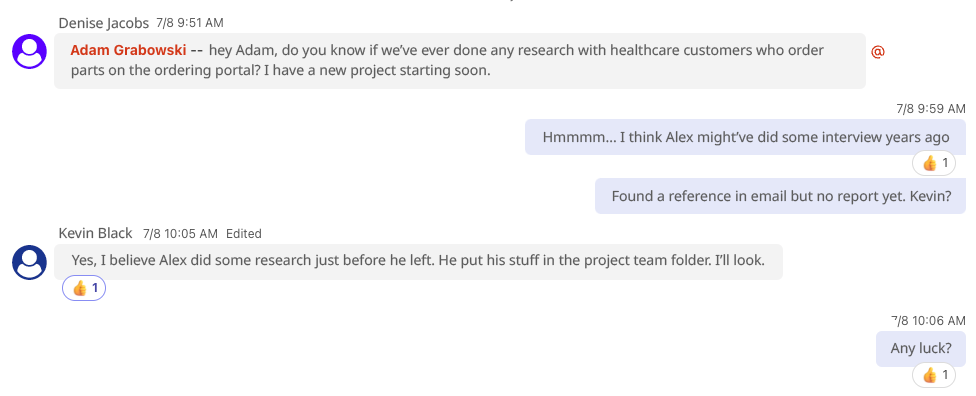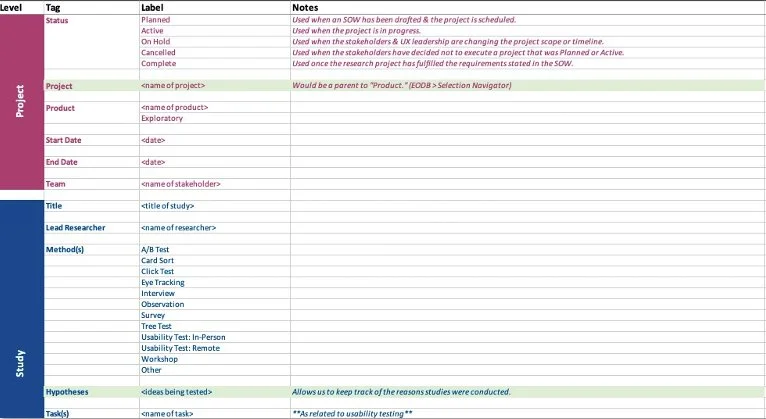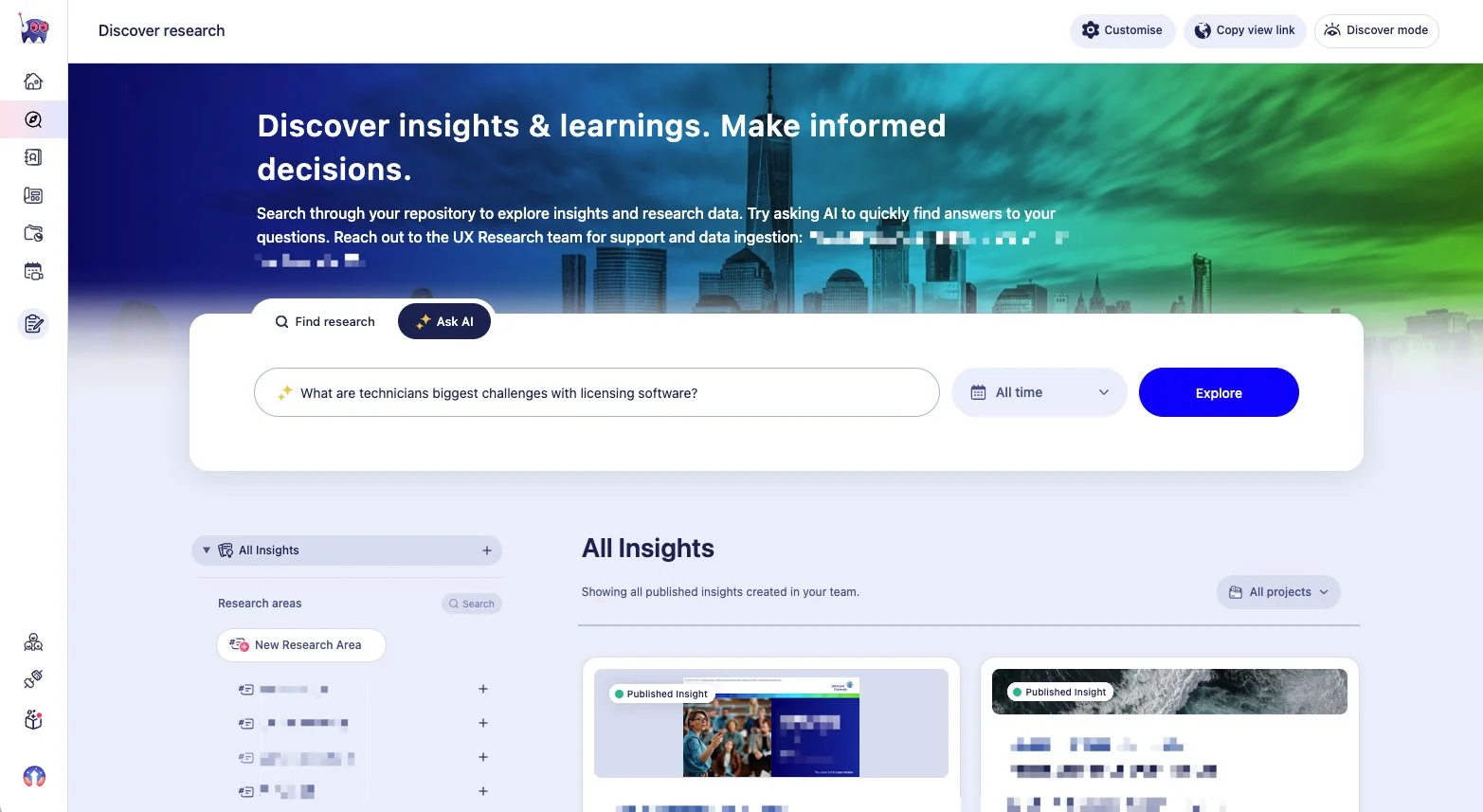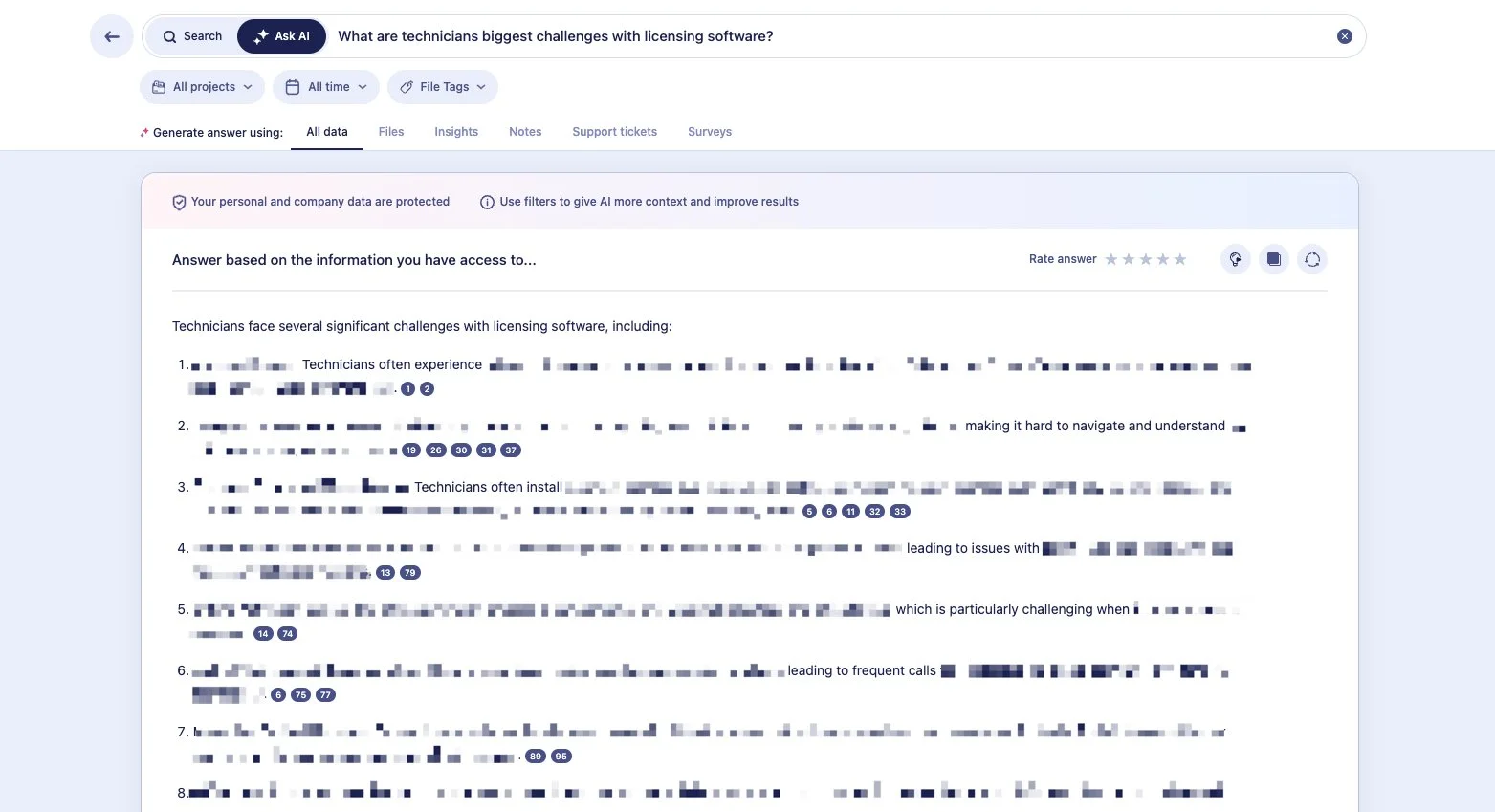Research Insights Repository
Turning our past research into a platform for new learning
Year
2022 - Present
My Role
Research Team Practice Lead, Business Case Development, Operational Improvement
Background
Our user research team was delivering valuable reports but we noticed that insights that were not actioned immediately were often lost and forgotten. And when stakeholders did inquire about past research it was incredibly difficult find relevant content in a slew of Sharepoint folders. Previous leaders had suggested creating a catalog of our research artifacts but it was never actioned. We recognized the need to leverage prior research and saw an opportunity to increase the team’s impact.
Challenges Faced
Valuable customer insights were being lost and forgotten
Finding prior research was a “needle in the haystack” effort
Our organization wasn’t capitalizing on existing knowledge, leading to duplicate efforts or blind spots
Approach
We identified a list of must-have and nice-to-have features, evaluated a number of vendors, and crafted a business case for the initiative. Instead of requesting additional funding, we found that we could replace one of our costly vendors to fund this project and provide additional tooling for the team.
We selected a vendor and went through an exhaustive process establishing our tagging strategy, topology, and began uploading our research. We succeeded in creating a central location for all of our research and made it easier to find materials. However, halfway through year one, our research team was finding it difficult to invest the time to upload and tag their research while being barraged by incoming requests. And we weren’t able to populate enough research to achieve the critical mass needed for our repository to be truly useful to the larger organization.
At this critical juncture, we learned that another tool we were already using had expanded its capabilities on storing and searching research. Its AI capabilities made tagging an optional step, making it almost effortless to upload research into the repository. Therefore, we made the decision to end our relationship with the initial vendor and make this other tool our central hub for storing and accessing research data. Now all of our new research was being automatically achieved and we freed up time to upload all of our research from prior years.
At a quarterly All Hands Meeting we introduced our repository and demonstrated how easily anyone in the organization could interact with the insights using a Chat-GPT style prompt. The number of account registrations to the platform increased from 56 to 95 in the three months following our presentation. This engagement confirmed the that this new resource was valuable to the organization, and not just our small research team.
Additionally, this platform provided a new capability for us. Now when we received new research requests we could easily create reports of our existing knowledge and craft research plans to expand and target new learnings.
Conclusion/Learnings
Being creative with our budget was the key to success on this initiative. We were able to add this new capability while reducing our team’s expenses. And our initial misstep with the first vendor is a good reminder to consider the end-to-end process changes and not just the results. The repository has proven itself invaluable; especially in the discovery process where researchers and non-research colleagues can explore our knowledge base with ease.
NEXT UP: Team Charter



